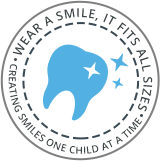
Services
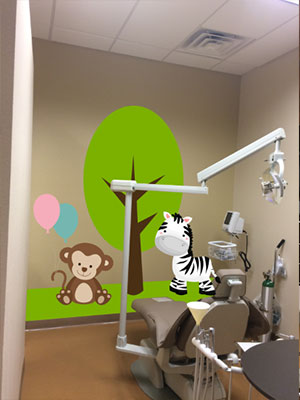
- Dental Exam for Children Starting Age 6 Month Old up to 18
- Dental Exam/ Treatment for Physically or Mentally Disabled Children
- Dental Cleaning
- Fluoride Treatment
- Sealants
- Tooth Colored Fillings
- Crowns
- Baby Tooth Root Canal Treatment
- Young Permanent Tooth Root Canal Treatment
- Space Maintainers
- Pedi-Partials
- (Removal of tongue-tie and lip-tie) Frenectomy
- Dental Trauma Management and Treatment
- Sports Guards and Night Guards
- (Braces) Orthodontic Treatment
- Laughing Gas
- Laser for Soft Tissue Surgery
- Silver Diamine Fluoride (SDF)
- MI paste
- Resin Infiltration (ICON)
- (White) Zirconia Crowns
- Tooth Whitening
- Conscious Sedation
- Deep Sedation
- General Anesthesia in Hospital Setting
Learn more about our Services
Silver Diamine Fluoride
 We are one of the first and few dental offices in Garland to offer this revolutionary treatment option for the management of tooth decay. Silver Diamine Fluoride is an antimicrobial liquid that is able to treat cavities in a non-invasive, fast, affordable, and painless manner.
We are one of the first and few dental offices in Garland to offer this revolutionary treatment option for the management of tooth decay. Silver Diamine Fluoride is an antimicrobial liquid that is able to treat cavities in a non-invasive, fast, affordable, and painless manner.
Some patients who have active tooth decay may be eligible for an alternative treatment that uses Silver Diamine Fluoride. FDA approved in August of 2014, SDF became commercially available to dental professionals in April of 2015 as Advantage Arrest by Elevate Oral Care. Compared to a traditional filling that requires shots of local anesthetic and drilling of tooth structure, this treatment is non-invasive and more comfortable for the patient. It is a liquid that is simply brushed on to the cavity that can stop current decay and also prevent new decay in the future.
Benefits: SDF has very low toxicity, it is quick, painless, non-invasive, affordable, and can stop tooth decay and help prevent recurrent decay. SDF can be used to treat tooth sensitivity.
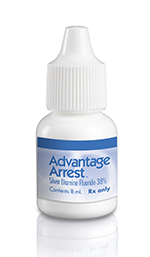 Note: SDF permanently stains cavities black. SDF requires repeat application during recall appointments for maximum efficacy. SDF can not be used in the presence of infection or decay into the nerve.
Note: SDF permanently stains cavities black. SDF requires repeat application during recall appointments for maximum efficacy. SDF can not be used in the presence of infection or decay into the nerve.
MI Paste
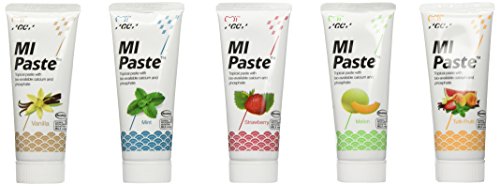 MI Paste and MI Paste Plus are the only products for professional use containing the active ingredient RECALDENT™ (CPP-ACP), a special milk-derived protein that has a unique ability to release bio-available calcium and phosphate (and fluoride in MI Paste Plus) to tooth surfaces. MI Paste is not toothpaste, but rather a treatment for enamel that is applied to the teeth after routine brushing and flossing.
MI Paste and MI Paste Plus are the only products for professional use containing the active ingredient RECALDENT™ (CPP-ACP), a special milk-derived protein that has a unique ability to release bio-available calcium and phosphate (and fluoride in MI Paste Plus) to tooth surfaces. MI Paste is not toothpaste, but rather a treatment for enamel that is applied to the teeth after routine brushing and flossing.
MI Paste Plus offers the same benefits of MI Paste, but is enhanced with a patented form of fluoride (900 ppm). MI Paste and MI Paste Plus are safe and easy-to-use at-home. They are both available in delicious flavors.
Benefits:
- Relieves tooth sensitivity
- Does not irritate dry mouths
- Provides a topical coating for patients suffering from sensitivity and oral mucosa
- Helps minimize tooth sensitivity before and after professional cleaning and tooth whitening
ICON Resin Infiltration
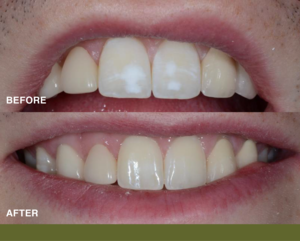 Resin infiltration is a minimally invasive restorative treatment for post-ortho white-spot lesions and certain congenital hypocalcified enamel lesions. White Spot lesions are associated with subsurface enamel porosities caused by a cyclical imbalance between demineralization and remineralization of the enamel, resulting from poor hygiene and associated plaque, bacteria and acids. With time, reminerlization at the outer surface of the tooth decreases the access of calcium and other ions to deeper portions of the enamel, eventually arresting the lesion. The lesions look white because there is a scattering of light at the subsurface of the demineralized enamel.
Resin infiltration is a minimally invasive restorative treatment for post-ortho white-spot lesions and certain congenital hypocalcified enamel lesions. White Spot lesions are associated with subsurface enamel porosities caused by a cyclical imbalance between demineralization and remineralization of the enamel, resulting from poor hygiene and associated plaque, bacteria and acids. With time, reminerlization at the outer surface of the tooth decreases the access of calcium and other ions to deeper portions of the enamel, eventually arresting the lesion. The lesions look white because there is a scattering of light at the subsurface of the demineralized enamel.
Benefits:
- one visit
- no “shots” or numbing
- no drilling
- much less invasive and less expensive than the alternatives of fillings or veneers
- can be done sooner than other cosmetic options like veneers that you have to wait until growth is complete
- White spot lesions treated with Icon will whiten similarly to the natural tooth enamel
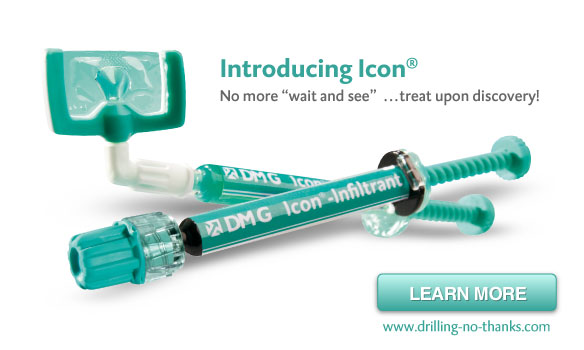
Note: Temporary blanching of gums can occur in lesions close to the gumline.
Tooth Whitening
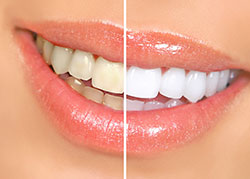 Want a brighter smile? Teeth whitening is ideal for people who have healthy teeth and gums. Individuals with yellow tones to their teeth respond best.
With our professional, take-home bleaching kits, you can brighten your teeth at your leisure. “Opalescence Go” whitening features ready-to-go convenience with the “ultrafit” tray for an even more comfortable whitening experience. Our Take-home whitening kits contain 15% hydrogen peroxide with wear times from 15 to 20 minutes. When administered correctly, take-home bleaching trays can lighten teeth by multiple shades. Before you try at-home tooth-bleaching kits, be sure to talk to your dentist to know more about pros and cons.
Note: Bleaching will not whiten porcelain crowns or composite tooth-colored bondings.
Want a brighter smile? Teeth whitening is ideal for people who have healthy teeth and gums. Individuals with yellow tones to their teeth respond best.
With our professional, take-home bleaching kits, you can brighten your teeth at your leisure. “Opalescence Go” whitening features ready-to-go convenience with the “ultrafit” tray for an even more comfortable whitening experience. Our Take-home whitening kits contain 15% hydrogen peroxide with wear times from 15 to 20 minutes. When administered correctly, take-home bleaching trays can lighten teeth by multiple shades. Before you try at-home tooth-bleaching kits, be sure to talk to your dentist to know more about pros and cons.
Note: Bleaching will not whiten porcelain crowns or composite tooth-colored bondings.
Zirconia Crowns (White Crowns)
 Zirconia has a long history as a proven biocompatible material in the human body. It has been used as a prosthesis in hip replacements since the 1970s and for crowns, endodontic posts, implant abutments, and other crown and bridge applications in adult patients for at least 15 years. Zirconia has only been used for pediatric crowns since 2010.
Zirconia has a long history as a proven biocompatible material in the human body. It has been used as a prosthesis in hip replacements since the 1970s and for crowns, endodontic posts, implant abutments, and other crown and bridge applications in adult patients for at least 15 years. Zirconia has only been used for pediatric crowns since 2010.
Pediatric zirconia crowns, like stainless steel crowns, come premade in six or seven different sizes for each tooth and are supplied in kits. To place the crowns, the caries is removed and the tooth is prepared with occlusal and circumferential reduction to a gingival featheredge.
Benefits:
The most obvious advantage of zirconia crowns is their excellent esthetics, which is far superior to other pediatric crown options and rivals custom-fabricated crowns.
Moreover, zirconia crowns will not chip as the preveneered stainless steel crowns do on occasion, nor will they discolor and break down over time like resin strip crowns often do.

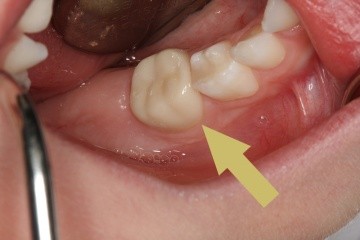
Laser for Soft Tissue Surgery
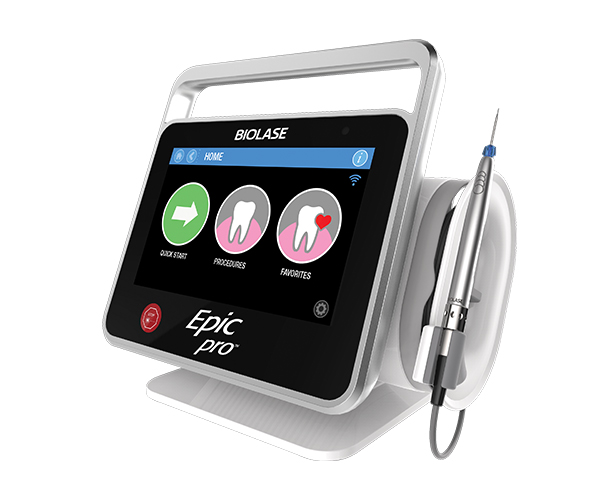 Dental lasers offer many advantages when treating children. Laser is a safe and gentle alternative to traditional dental tools. Treatment with laser is comfortable, quick, and atraumatic. Millions of patients have experienced the benefits of laser dentistry, such as gentler procedures and comfortable healing.
Dental lasers offer many advantages when treating children. Laser is a safe and gentle alternative to traditional dental tools. Treatment with laser is comfortable, quick, and atraumatic. Millions of patients have experienced the benefits of laser dentistry, such as gentler procedures and comfortable healing.
Diode laser has been popular in Pediatric Dentistry due to its most accurate incisions and excellent hemostasis. The ability to provide care with less use of needles and high-speed handpieces makes for a less traumatic experience. Having a less painful dental experience by the use of modern instruments like laser can be an efficient preventive and therapeutic strategy in pediatric dentistry. Subsequent treatment appointments are often easier to manage as well when the child has a more positive experience. Dental lasers can also aid in procedures such as orthodontic surgical needs.
The newest Diode laser technology can be used for the following procedures:
- Laser Fluorescence – diagnostic applications, detection of occlusal caries, detecting calculus in periodontal pockets, detection of dysplastic cells during oral cancer screening
- Soft tissue ablation – gingival contouring for esthetic purposes, frenectomy, gingivectomy, operculectomy
- Photobiomodulation – proliferation of broblasts and enhancing the healing of oral lesions (mucositis) or surgical wounds
- Periodontal procedures – laser bacterial reduction, elimination of necrotic epithelial tissue during regenerative periodontal surgeries
- Whitening
Benefits:
- Bloodless operating field, for example, for frenectomy and biopsy
- Reduced pain: many procedures can be done with only topical anesthesia
- Easy and precise gingival contouring for restorative and aesthetic applications
- Makes procedures, like troughing, more efficient
- Offers new procedures, such as, tooth whitening and pain management
Tongue Tie & Lip Tie Removal
Tongue ties and upper lip ties are common in babies. Frenectomy is a procedure used to correct this congenital condition. Babies tolerate the procedure very well, and we try to ensure that discomfort is minimized using the newest laser technology.
Tight lower tongue frenum attachment may restrict the mobility of the tongue and appears as a cupping or heart shaped tongue when the tongue is elevated. This can result in an inability to get the tongue under the nipple to create suction to draw out milk. Long term, a tongue-tie can result in speech problems and issues later with transferring food around the mouth for chewing.
A tight upper lip frenum attachment may compromise full-lip flanging. This can result in a shallow latch during breastfeeding. Additionally, the tight upper lip may trap milk, resulting in constant contact of milk to the front of teeth, and possibly lead to dental decay. A future diastema (gap between the teeth) may also occur.

Tongue-Tie
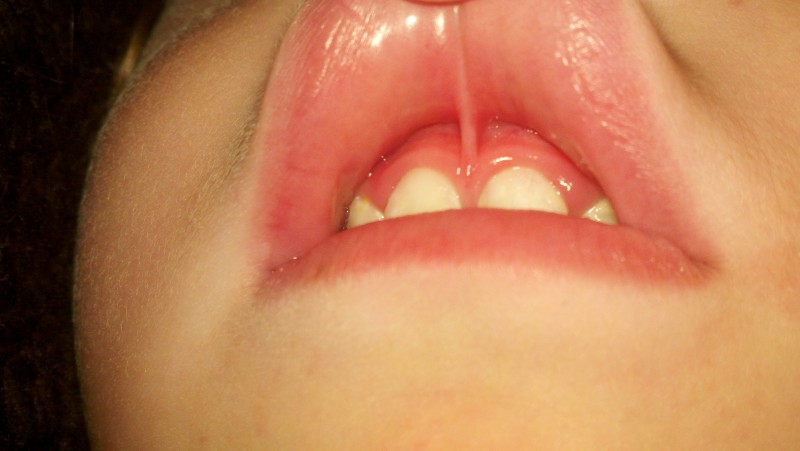
Lip-Tie
Orthodontic Treatment (Braces)
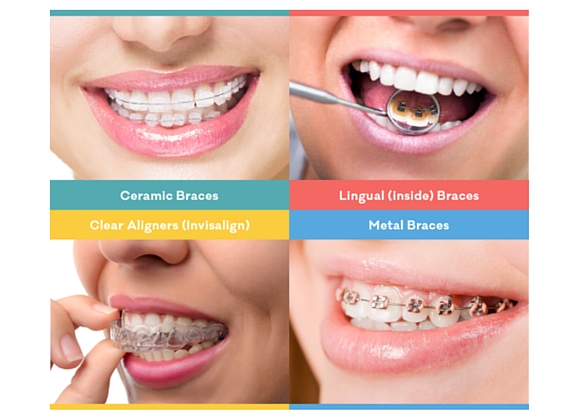 Orthodontic treatment is a way of straightening or moving teeth, to improve the appearance of the teeth and how they work. It can also help to look after the long-term health of your teeth, gums and jaw joints, by spreading the biting pressure over all your teeth.
Orthodontic treatment is a way of straightening or moving teeth, to improve the appearance of the teeth and how they work. It can also help to look after the long-term health of your teeth, gums and jaw joints, by spreading the biting pressure over all your teeth.
Many people have crowded or crooked teeth. Orthodontic treatment will straighten the teeth or move them into a better position. This can improve their appearance and the way the teeth bite together, while also making them easier to clean.
Some people have upper front teeth that stick out and look unsightly. These 'prominent' teeth are more likely to be damaged, but orthodontic treatment can move them back into line. Or the way the upper and lower jaws meet can cause teeth to look unsightly and lead to an incorrect bite. Orthodontic treatment may be able to correct both of these problems.
When the teeth don't meet correctly, this can put strain on the muscles of the jaw, causing jaw and joint problems and sometimes headaches. Orthodontic treatment can help you to bite more evenly and reduce the strain.
The best time to get orthodontic treatment is generally during childhood, but adults can have orthodontic treatment too, and more and more are doing so. Age is less important than having the right number of teeth. In children it may be necessary to wait for enough teeth to come through before starting treatment.
Children with Special Healthcare Needs:
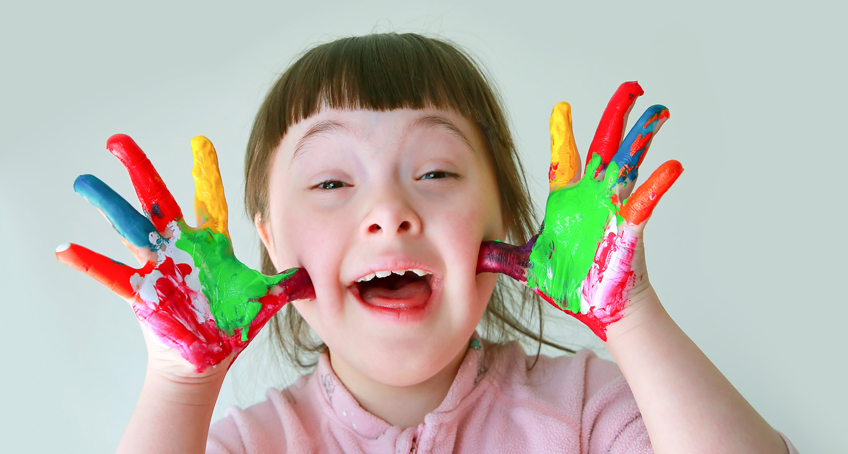 Patients with special care needs are those who due to physical, medical, developmental or cognitive conditions require special consideration when receiving dental treatment. This can include people with autism, sensory issues, Down syndrome, spinal cord injuries, or other physical and behavioral impairments.
Patients with special care needs are those who due to physical, medical, developmental or cognitive conditions require special consideration when receiving dental treatment. This can include people with autism, sensory issues, Down syndrome, spinal cord injuries, or other physical and behavioral impairments.
At Pediatric Pro, we are dedicated to providing quality dental care to children, regardless of their physical and mental capabilities. Our pediatric dentists have comprehensive training in special needs pediatric dentistry. Our focus is on meeting the needs and working with the limitations of our patients to create a positive experience for them.
Sedation
Nitrous Oxide
Some children are given nitrous oxide/oxygen, or what you may know as laughing gas, to relax them for their dental treatment. Nitrous oxide/oxygen is a blend of two gases, oxygen and nitrous oxide. Nitrous oxide/oxygen is given through a small breathing mask which is placed over the child’s nose, allowing them to relax, but without putting them to sleep. The American Academy of Pediatric Dentistry, recognizes this technique as a very safe, effective technique to use for treating children’s dental needs. The gas is mild, easily taken, then with normal breathing, it is quickly eliminated from the body. It is non-addictive. While inhaling nitrous oxide/oxygen, your child remains fully conscious and keeps all natural reflexes.
Prior to your appointment:
- Please inform us of any change to your child’s health and/or medical condition.
- Tell us about any respiratory condition that makes breathing through the nose difficult for your child. It may limit the effectiveness of the nitrous oxide/oxygen.
- Let us know if your child is taking any medication on the day of the appointment.
Conscious Sedation
Conscious Sedation is recommended for apprehensive children, very young children, and children with special needs. It is used to calm your child and to reduce the anxiety or discomfort associated with dental treatments. Your child may be quite drowsy, and may even fall asleep, but they will not become unconscious.
There are a variety of different medications, which can be used for conscious sedation. The doctor will prescribe the medication best suited for your child’s overall health and dental treatment recommendations. We will be happy to answer any questions you might have concerning the specific drugs we plan to give to your child.
Prior to your appointment:
- Please notify us of any change in your child’s health and/or medical condition. Do not bring your child for treatment with a fever, ear infection or cold. Should your child become ill, contact us to see if it is necessary to postpone the appointment.
- You must tell the doctor of any drugs that your child is currently taking and any drug reactions and/or change in medical history.
- Please dress your child in loose fitting, comfortable clothing.
- Please make sure that your child goes to the bathroom immediately prior to arriving at the office.
- Your child should not have solid food for at least 6 hours prior to their sedation appointment and only clear liquids for up to 4 hours before the appointment.
- The child's parent or legal guardian must remain at the office during the complete procedure.
- Please watch your child closely while the medication is taking effect. Hold them in your lap or keep close to you. Do not let them "run around."
- Your child will act drowsy and may become slightly excited at first.
After the sedation appointment:
- Your child will be drowsy and will need to be monitored very closely. Keep your child away from areas of potential harm.
- If your child wants to sleep, place them on their side with their chin up. Wake your child every hour and encourage them to have something to drink in order to prevent dehydration. At first it is best to give your child sips of clear liquids to prevent nausea. The first meal should be light and easily digestible.
- If your child vomits, help them bend over and turn their head to the side to insure that they do not inhale the vomit.
- Because we use local anesthetic to numb your child’s mouth during the procedure, your child may have the tendency to bite or chew their lips, cheeks, and/or tongue and/or rub and scratch their face after treatment. Please observe your child carefully to prevent any injury to these areas.
- Please call our office for any questions or concerns that you might have.
Deep Sedation
Deep Sedation is recommended for apprehensive children, very young children, and children with special needs that would not work well under conscious sedation. Our pediatric dentist performs the dental treatment in the office with the child anesthetized under deep sedation, which is administered and monitored by an anesthesiologist.
Prior to your appointment:
- Please notify us of any change in your child’s health and/or medical condition. Do not bring your child for treatment with a fever, ear infection or cold. Should your child become ill, contact us to see if it is necessary to postpone the appointment.
- You must tell the doctor of any drugs that your child is currently taking and any drug reactions and/or change in medical history.
- Please dress your child in loose fitting, comfortable clothing.
- Please make sure that your child goes to the bathroom immediately prior to arriving at the office.
- Your child should not have milk or solid food after midnight prior to the scheduled procedure and clear liquids ONLY (water, apple juice, Gatorade) for up to 6 hours prior to the appointment.
- The child’s parent or legal guardian must remain at the office during the complete procedure.
After the sedation appointment:
- Your child will be drowsy and will need to be monitored very closely. Keep your child away from areas of potential harm.
- If your child wants to sleep, place them on their side with their chin up. Wake your child every hour and encourage them to have something to drink in order to prevent dehydration. At first it is best to give your child sips of clear liquids to prevent nausea. The first meal should be light and easily digestible.
- If your child vomits, help them bend over and turn their head to the side to insure that they do not inhale the vomit.
- Please call our office for any questions or concerns that you might have.
General Anesthesia:
Outpatient General Anesthesia is recommended for apprehensive children, very young children, and children with special needs that would not work well under conscious sedation. General anesthesia renders your child completely asleep. This would be the same as if he/she was having their tonsils removed, ear tubes, or hernia repaired. This is performed in a hospital or outpatient setting only. While the assumed risks are greater than that of other treatment options, if this is suggested for your child, the benefits of treatment this way have been deemed to outweigh the risks. Most pediatric medical literature places the risk of a serious reaction in the range of 1 in 25,000 to 1 in 200,000, far better than the assumed risk of even driving a car daily. The inherent risks if this is not chosen are multiple appointments, potential for physical restraint to complete treatment and possible emotional and/or physical injury to your child in order to complete their dental treatment. The risks of NO treatment include tooth pain, infection, swelling, the spread of new decay, damage to their developing adult teeth and possible life threatening hospitalization from a dental infection.
Prior to your appointment:
- Please notify us of any change in your child’s health. Do not bring your child for treatment with a fever, ear infection or cold. Should your child become ill, contact us to see if it is necessary to postpone the appointment.
- You must tell the doctor of any drugs that your child is currently taking and any drug reactions and/or change in medical history.
- Please dress your child in loose fitting, comfortable clothing.
- Your child should not have milk or solid food after midnight prior to the scheduled procedure and clear liquids ONLY (water, apple juice, Gatorade) for up to 6 hours prior to the appointment.
- The child’s parent or legal guardian must remain at the hospital or surgical site waiting room during the complete procedure.
After the appointment:
- Your child will be drowsy and will need to be monitored very closely. Keep your child away from areas of potential harm.
- If your child wants to sleep, place them on their side with their chin up. Wake your child every hour and encourage them to have something to drink in order to prevent dehydration. At first it is best to give your child sips of clear liquids to prevent nausea. The first meal should be light and easily digestible.
- If your child vomits, help them bend over and turn their head to the side to insure that they do not inhale the vomit.
- Prior to leaving the hospital/outpatient center, you will be given a detailed list of "Post-Op Instructions" and an emergency contact number if needed.

